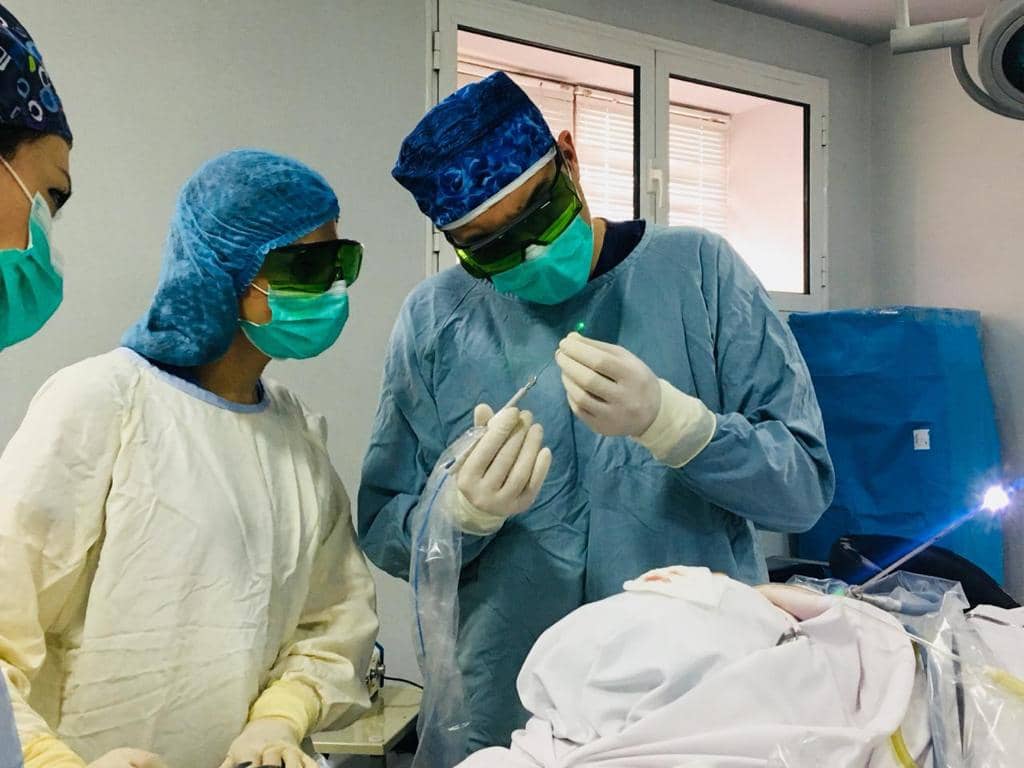Source: med.news.am
Inflammation and obstruction of the nasolacrimal duct are rather common at any age, and both ophthalmologists and otorhinolaryngologists come across this during their careers. Until recently, the nasolacrimal duct used to be restored through open surgeries and by cutting facial skin.
Currently, in Armenia, nasolacrimal duct surgery is performed through endoscopic laser dacryocystorhinostomy, without cutting facial skin. Whereas citizens of Armenia used to have to travel abroad for this surgery, now they have the opportunity to undergo this surgery in Armenia.
Candidate of medical sciences, otorhinolaryngologist Gor Ananyan has specialized and worked at Helios Amper-Klinikum Dachau (Munich, Germany) medical center and is aware of not only the volume of modern diagnosis, conservative and surgical treatment of lesions in the nose, throat, ear, head and neck, but also the above-mentioned surgery. After returning to Armenia, Gor Ananyan decided to introduce endoscopic laser dacryocystorhinostomy at Nairi Medical Center and the newly opened Da Vinci clinic, laying the foundation for the successful introduction of the innovation in our region. The surgeries are performed through close collaboration with ophthalmologists.
In an interview with NEWS.am Medicine, Dr. Ananyan provided details about the laser surgery and its major advantages.
Thanks to this surgery, as already mentioned, the patient’s skin is not cut. The surgery lasts about 20-30 minutes, and there is both local and general anesthesia (mainly for children).
“Intranasal endoscopic surgery allows overseeing and performing the entire surgery in detail. In the initial stage, the endoscope is inserted into the nasal cavity, shaping the new aperture of the nasolacrimal duct through a laser. Afterwards, the laser light makes its way to the lacrimal sac through the nasolacrimal duct, softly treating and widening the side of the duct. A silicone stent is temporarily (for nearly a month) inserted in the duct through the newly created aperture, ensuring outflow of tears and hindering narrowing and obstruction of the nasolacrimal duct in the future,” Dr. Ananyan said.
One of the other major advantages is that, after the surgery, there are no scars on the patient’s face, there is minimum risk of complications and bleeding, the postoperative period passes easily and is painless, compared to open surgery. There are no restrictions on age for this surgery.
Dr. Ananyan went on to say the following: “This surgery can also be performed by ophthalmologists, if, of course, they have the skills required for performing intranasal endoscopic surgeries. If the surgery is performed by an otorhinolaryngologist, the latter is capable of eliminating not only the intranasal lesions contributing to the narrowing and obstruction of the nasolacrimal duct (deviated septum, growth of the lower crust, presence of various types of neoplasms), but also, if necessary, the lesions hindering breathing of the paranasal sinuses and nasal breathing.”
Dr. Gor Ananyan also presented the preoperative period. First, it is necessary to consult with an ophthalmologist and an otorhinolaryngologist, perform several instrumental and laboratory examinations, including computed tomography of the nose and paranasal sinuses, the aim of which is to give a complete assessment of the anatomical structure of the nose, paranasal sinuses and the sclera. All this helps give a precise analysis and create a plan for the volume and course of the surgery.
According to the doctor, new technologies provide the opportunity to cure seemingly serious and complicated diseases easily and quickly, and as a result, patients no longer have to “be afraid” of going to see a doctor or postpone their visit to a doctor for different reasons (this may lead to worsening of the disease).
